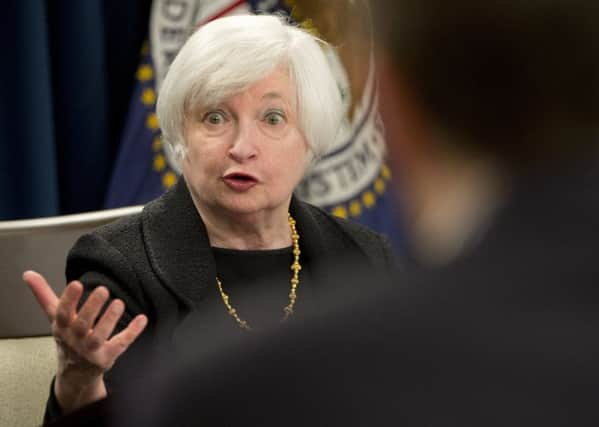Bill Jamieson: Treating emerging markets with care


Well, that was until last week. Markets closed last Friday after their best week this year amid optimism over the outlook for commodity prices. The very sectors that seemed draped by a leper’s bell roared back.
Helped by strong rallies in the prices of industrial metals such as copper and zinc, shares in the natural resource sector enjoyed a powerful bounce. Anglo American, up 7 per cent on Friday, is now 34 per cent above its recent low. Glencore, whose shares had suffered a headline-hogging collapse, recovered strongly last week to stand more than 85 per cent above its 2015 low.
Advertisement
Hide AdAdvertisement
Hide AdEmerging markets have posted an especially strong recovery, up 5.4 per cent over the period, having been hit hard by fears over China’s economic slowdown that culminated in the August “Black Monday” stock market tumble. And a 9.3 per cent surge in the price of oil, Brent crude climbing back to $53 a barrel, provided a big boost to the stock markets of economies heavily dependent on oil.
Growing confidence that the US Federal Reserve, led by Janet Yellen, pictured, will pause further before raising rates also helped to calm fears about a sharp fall in global growth. Overall, the FTSE World index rose 3.9 per cent over the week in its best five-day performance since markets’ recovery from the eurozone crisis in 2011.
Markets from America to Japan joined in the rally, with the FTSE 100 closing on Friday 4.7 per cent ahead at 6,416.16, for a gain of 4.67 per cent on the week and a bounce of 8.7 per cent, or 528 points, from its 2015 low. The FTSE 100 has now scraped into positive territory since the beginning of the year.
Sceptics were quick to brush this aside as a “dead cat bounce” and a short-lived rally from oversold positions in late September. After all, what has really changed over the week other than the closing of some short selling positions?
There’s certainly a view that, while demand for industrial commodities is unlikely to bounce back to 2014 levels any time soon, the selling of recent weeks has been overdone. The macro evidence points to a slowdown, not to the onset of recession.
And there is also a view that China’s economy may not be as badly hit as many feared back in the summer. Indeed, the cack-handed way in which the Chinese authorities attempted to break the dizzying plunge in the Shanghai stock market may have caused more damage to investor sentiment, particularly across emerging markets.
But the adverse sentiment looks to be bottoming out. Analysts at US investment bank Morgan Stanley now say this is the time to buy emerging markets and commodity-related shares. Now that’s a bold call. And it critically hinges on better news flow from China, the main driver of emerging market – and wider global market – sentiment.
Any signs that China’s economic activity may not be as bad as feared would provide a fillip for emerging markets – and indeed global markets as a whole. “Our economists,” said Morgan Stanley, “believe macro momentum in the country could actually start to show some improvement in the coming months in response to a faster pace of new policy initiatives.
Advertisement
Hide AdAdvertisement
Hide Ad“Any improvement in sentiment toward emerging markets is likely to have serious ramifications for investors given the extreme level of positioning we see across markets.”
But talk of a turning tide on emerging markets needs to contend with the massive pile of debt that developing countries have incurred – and which explains the sensitivity of their economies to expected changes in US interest rates. Emerging market companies have “over-borrowed” by $3 trillion in the last decade, reflecting a quadrupling of private sector debt between 2004 and 2014. While UK investors may wish to retain a modicum of emerging market exposure, the overall preference for now remains trusts and funds focused on developed countries – and in particular those with defensive characteristics.
Alliance Dividend
What is the “true” level of the Alliance Trust dividend yield? Last week I said the yield on the shares had drifted down to 1.6 per cent, while the yield given in the Financial Times is 2.03 per cent. The figure I quoted was from the TrustNet website, which does not include the payment of special dividends. As Alliance has for some time paid special dividends – the latest on 30 June was 2.546p per share – the resulting higher yield figure could be seen as a better representation of investor experience. I hope this clarifies matters.